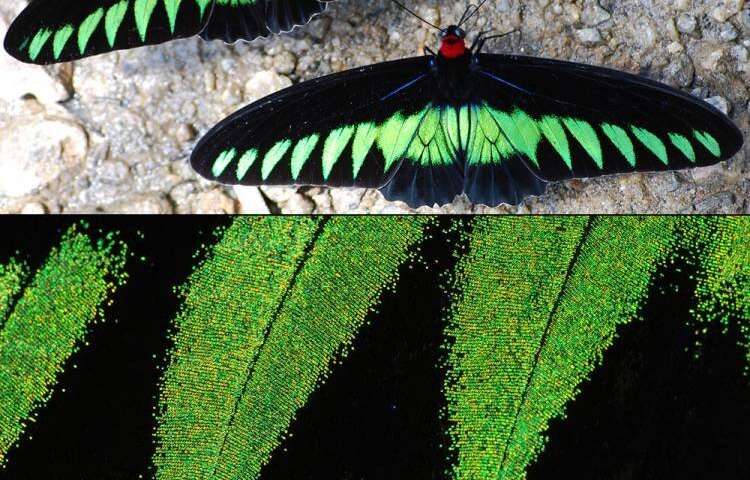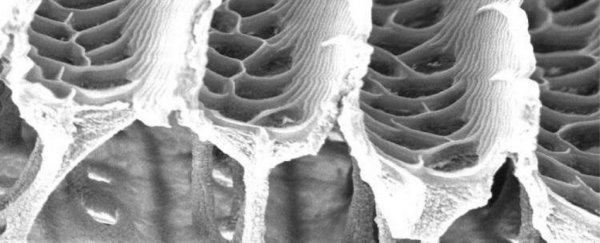Butterflies have taken the colour black to an entirely new level. The scales that shingle this insect's dark wings are nearly on par with the blackest of black coatings made by humans - except they're only a fifth of the thickness.
At just a few microns wide, these natural nanostructures absorb 99.94 percent of the light that hits them, allowing only a tiny amount to be reflected.
To put that in perspective, Vantablack, which used to be the blackest material known to science, absorbs 99.96 percent of light. And the material that surpassed its blackness has vertically aligned carbon nanotubes (CNTs) that can absorb more than 99.995 percent.
Even for the natural world, however, ultra-black butterflies are, well, ultra-black. Examining 10 species from around the world, which were either ultra-black, regular black or dark brown, researchers at Duke University found these creatures were between 10 to 100 times darker than charcoal, fresh asphalt and velvet.
It's the widest sample of black butterflies studied to date, with species coming from Central and South America, as well as Asia.
"Why be so black?" wonders biologist Alex Davis. "We think it's likely some sort of signal to mates or maybe a predator. But there's a host of other possibilities, and we're hoping to clear that up."
Under an electron microscope, the scales on a butterfly wing look kind of spongy or mesh-like, with ridges and holes held up by pillar-like beams of tissue (see image above).
Previously, it was the holes between these pillars that were thought to influence the level of blackness, but biologist Sönke Johnsen now thinks the shape and size of these hollowed-out spaces "doesn't matter" as much.
The ultra-black butterflies studied showed a variety of holes, shaped like honeycomb, rectangles and chevron patterns. But there was something else they all had in common.
 (DirkHeumannK1966/Barnard Dupont)
(DirkHeumannK1966/Barnard Dupont)
Compared to regular black scales, ultra-black scales showed steep ridges on the surface as well as deeper and thicker pillars underneath.
Running these two features through computer simulations, the researchers illustrate that scales lacking in either ridged surfaces or interior pillars reflected up to 16 times more light. That's essentially like going from ultra-black to dark brown.
Along with an added contrast from white borders or nearby bright patches, those dark colours on the wings of a butterfly appear even darker.
"Given that these structural changes increase the surface area for absorption," the authors write, "we conclude that butterflies operate under the same design principles as synthetic ultra-black materials - high surface roughness and a large area for absorption."
But because these scales are several times thinner than stacked carbon nanotubes, engineers and biologists alike are interested in learning how they can trap so much light without weighing themselves down.
The answer could possibly help us design better solar panels and telescopes. It could maybe even camouflage an aircraft so it can't be detected at night or by radar.
The possibilities are huge for such a nanoscopic mechanism.
The study was published in Nature Communications.
